There are different types of white canes, which are navigation tools for anyone living with blindness or vision impairment. They’re also known as mobility canes and are recognised throughout the world.
How to get support
If you have a diagnosis of vision impairment, please contact our friendly team to find out what low vision services and support we can provide to you both now and into the future.
There are also a number of low vision support groups within Perth and across the state, which can connect you with like-minded people to build friendships and offer support.
Enquire about low vision support services
A white cane provides independence to individuals so they can be active at home and outside. Not all white canes are the same, as VisAbility Orientation and Mobility (O&M) Instructor, Jodie, explains.
“Choosing a cane and a cane tip is like choosing a pair of shoes. Different canes and tips are suitable for different environments,” says Jodie.
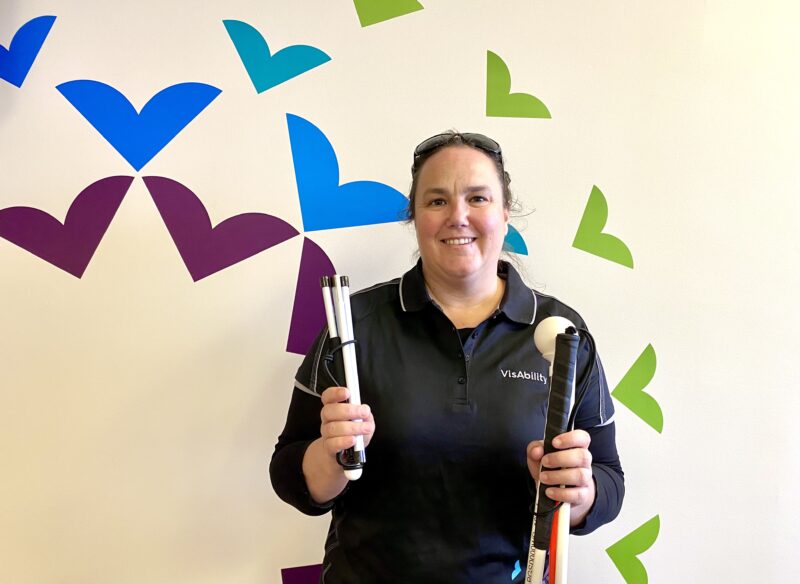
Where to buy the different types of white canes
White canes are available through your NDIS or My Aged Care plans. In order to incorporate them into your plans, you will need evidence that the cane has been assessed for you by an O&M instructor.
People can buy canes independently of their plans, but need to sign a waiver, acknowledging they haven’t received formal cane instruction.
“People need to know how to manoeuvre and use their white cane using the right techniques, so I would strongly recommend O&M instruction.”
Leading brands of canes are Ambutech and Bevria. A basic rigid cane can cost from as little as $40, with a fold-away (telescopic one) at $80. Tips can range from $5 to $35.
When to start using a white cane
Children with low vision are encouraged to start using a cane as early as possible, especially if they have an eye condition that can lead to blindness.
“Children can start on pre-canes or kiddie canes. Parents should encourage children to use them from an early age, so the cane becomes a natural part of their lifestyle and incorporated into daily routines,” explains Jodie.
“If someone has never had any sight, they will have never had any visual information about the world around them. It’s important to rely on tactile cues and sounds – like echoes,” she adds.
“People who were born with vision are at an advantage, because they can understand objects. They have an appreciation of what is around them.”
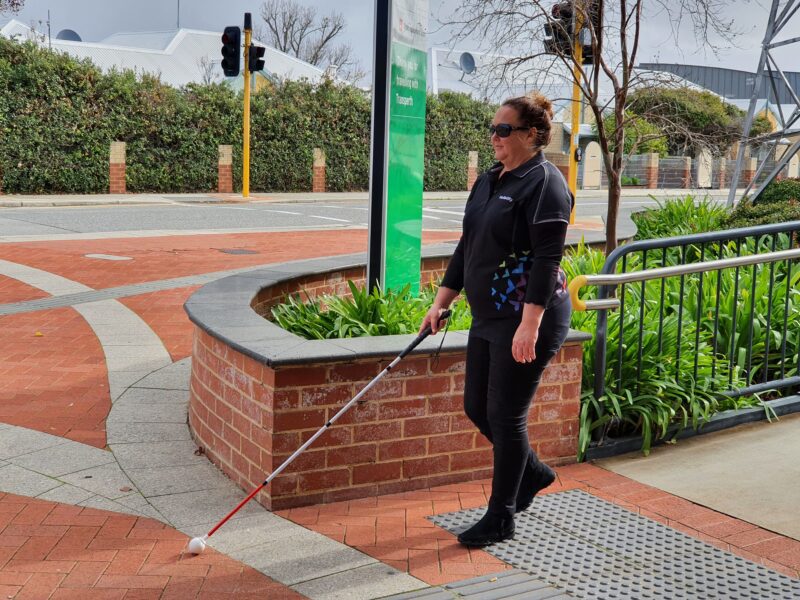
People with low vision or who are blind and receive orientation and mobility instruction and route training to learn how to manoeuvre safely through their community and use the cane to identify platform edges, steps, uneven surfaces.
Throughout O&M training, individuals are encouraged to use their senses – hearing, touch, and smell – to help them manoeuvre around with their cane.
“O&M instruction gives individuals a better understanding of various ground surfaces, noises, and echoes. For example, a cane user will be able to detect the difference between concrete and bitumen surface.”
O&M training with various types of white canes
Our O&M therapists will develop a program specifically suited to you in line with your goals and needs. As a guide, you may need ten sessions of long cane instruction.
Night orientation classes offer an opportunity for individuals to become more confident and mobile in the dark.
What does the red on a white cane mean?
White canes came into circulation in the early 20th Century. In 1921, James Biggs (link opens in new window), a photographer from England, became blind following an accident. He painted his walking stick white to make it highly visible. In 1930 George A. Bonham, a member of an American Lions Club, suggested the cane should be white with a red stripe to make it reflective and more noticeable.
A white and red cane has become an international symbol for vision loss. One with alternating red and white stripes signifies that the user is both deaf and blind.
How does a white cane work?
There are different types of cane techniques that may involve:
- Constant contact. The cane tip rolls or slides from side to side, sweeping back and forth.
- Touch technique. The cane tip moves from side to side, with a tap on each side.
- Diagonal manoeuvring. The cane is in front of you, held diagonally. It is either on or off the ground to detect objects as you move forward.
The type of technique you use depends on your ability, the environment around you and the cane and tip you are using.
Long cane
- The most popular and commonly used by individuals with severely restricted or no vision.
- Most suited for orientation and independent travel. It makes contact with the ground to detect obstacles, drop curbs, and ground surface changes.
- An orientation and mobility instructor will consider the grip, tip, weight, and length of a long cane suited to you. They will take into consideration your height and gait.
- 20cm to 152cm in length. Note: Sizes available between 20 – 36cm are known as kiddie canes.
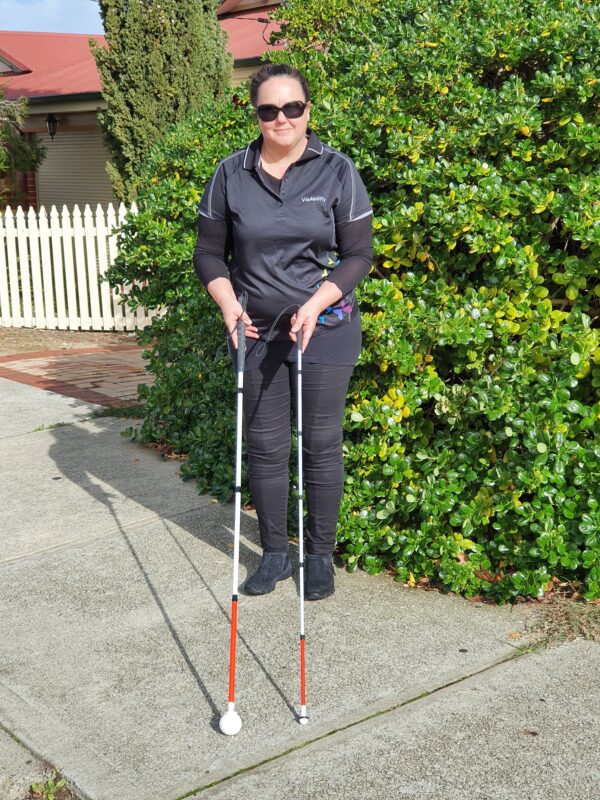
Guide cane
- Useful for people who have difficulty in determining depth perception and surface changes.
- Not designed to be a means of support because it is not long enough to touch the ground.
- Available in sizes from 70cm to 115cm.
- Held in a diagonal position.
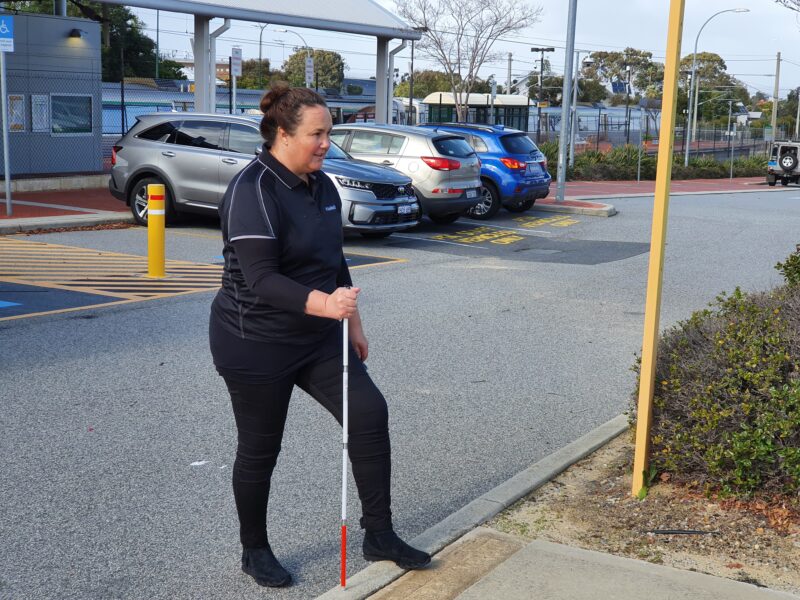
Identification cane
- Held in a diagonal position
- Not designed to be used on the ground or a means of support
- Available in sizes from 70cm to 110cm. It is not long enough to touch the ground.
Support cane
- Used when the individual has a problem with balance.
- Identifies the person has a vision impairment.
- Available in rigid or folding and telescopic formats.
- Available in sizes from 72cm to 95cm.
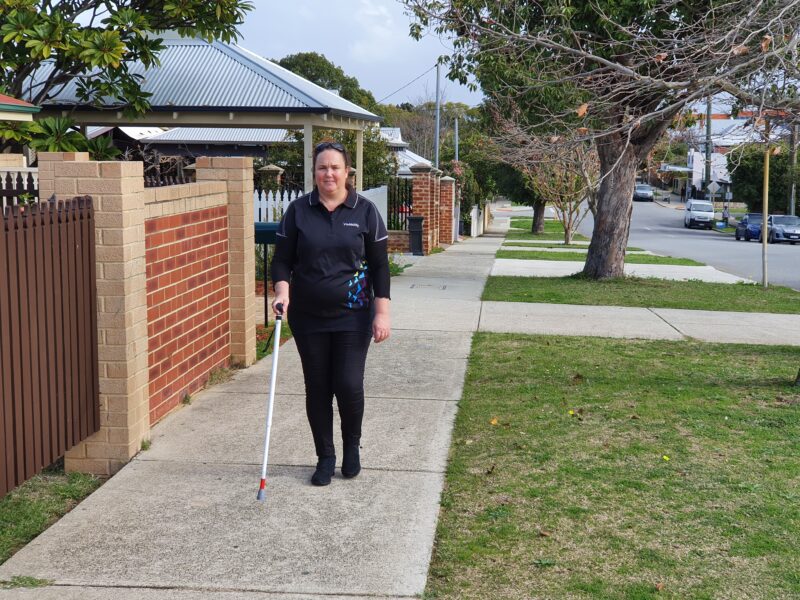
Kiddie canes
Modern electronic white canes
Canes are now available that utilise modern technology and have additional features built into them. The most popular electronic one is the WeWALK. It has built-in speakers, GPS and smartphone integration and sensors that send vibrations to the users to indicate obstacles ahead.
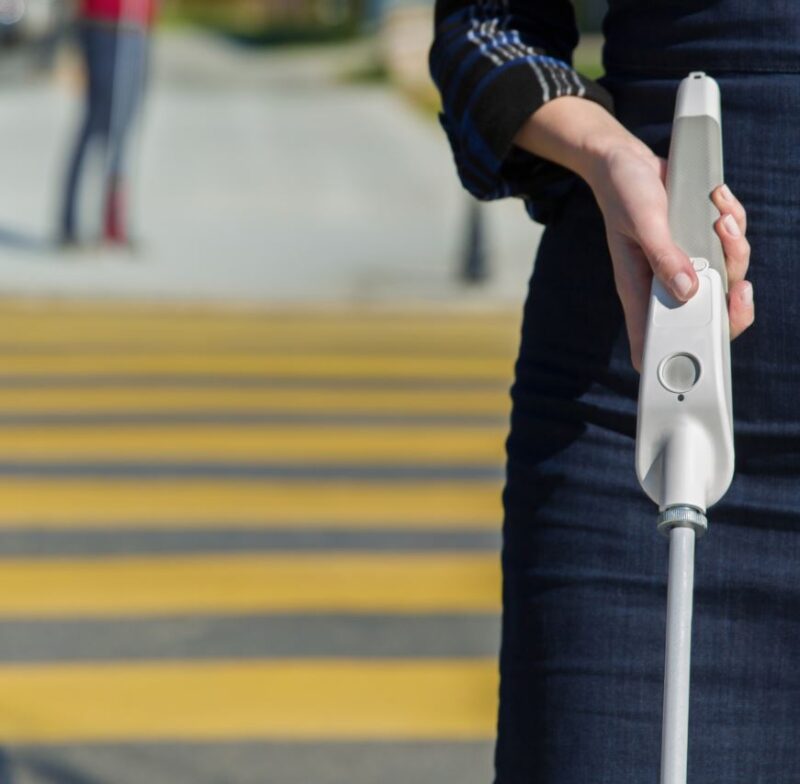
Using Google maps, you can plug in your destination and receive spoken directions to guide you. Many people welcome this new technology, but some say the canes are heavy to use.
How to get support
Please complete the form below to make an initial enquiry about the low vision services and support we can provide. Our Client Experience Team will contact you to discuss your individual needs both now and into the future.
There are also a number of low vision support groups within Perth and across the state, which can connect you with like-minded people to build friendships and offer support.
